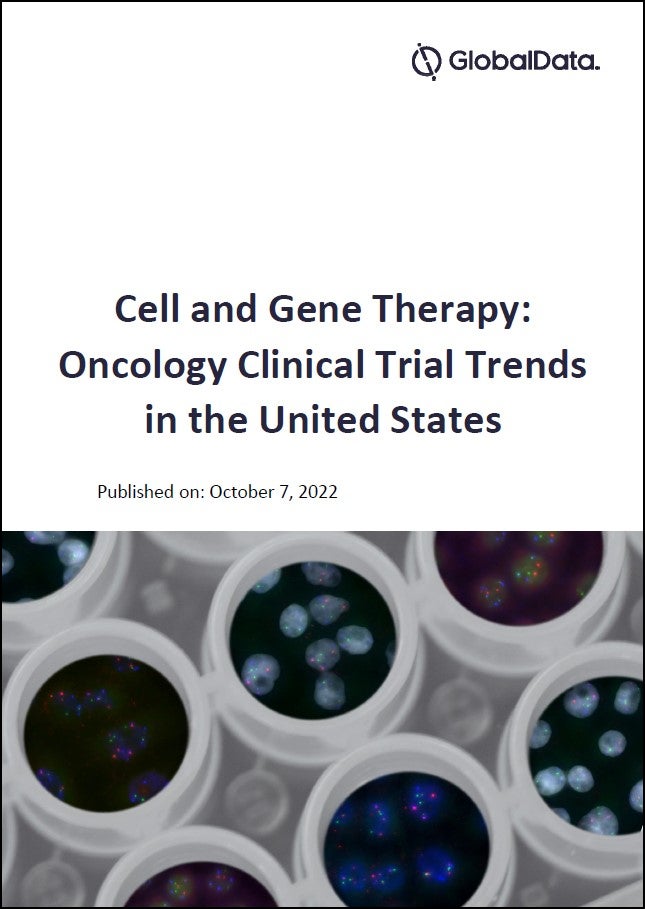Promising ADT combination therapy in prostate cancer
Hormone-sensitive prostate cancer (HSPC), also known as castration-sensitive prostate cancer (CSPC), illustrates that the cancer is controlled by keeping testosterone levels low, i.e., at the level at which is expected if the testicles were removed by castration. Treatment options for patients with metastatic HSPC (mHSPC) have historically been limited but, due to the onset of androgen deprivation therapy (ADT) into this segment, a multitude of trials involving combination therapies with ADT have been initiated.
At the European Society for Medical Oncology (ESMO) 2022 congress on 9-13 September, updated data from the Phase II/III STAMPEDE clinical trial studying the safety and efficacy of novel combination therapies against the current standard of care (SOC), which is ADT ± docetaxel chemotherapy, was presented. The speaker, Dr. Aurelius Omlin, Medical Oncologist at the Swiss Tumor Institute, described how patients with mHSPC (94% of whom had synchronous disease) were randomised 1:1 into two arms: SOC + Janssen-Cilag’s hormonal therapy Zytiga (abiraterone) + the corticosteroid prednisone, and SOC + Zytiga/prednisone + Astellas’ androgen receptor (AR) inhibitor Xtandi (enzalutamide).
Results showed that seven-year survival was improved by 18% in mHSPC patients who received the doublet therapy of SOC + Zytiga/prednisone, compared to those who received SOC alone, 30% for SOC patients compared to 48% for SOC + Zytiga/Prednisone (HR: 0.62, 95% CI: 0.53, 0.73). In patients who received the triplet combination of SOC + Zytiga/prednisone + Xtandi, a statistically significant improvement in overall survival (OS) was not observed (HR: 0.65; 95% CI 0.55, 0.77), compared to the doublet therapy, and toxicity was slightly higher. Therefore, the addition of Xtandi to SOC + Zytiga/prednisone is not expected to be further studied.
How well do you really know your competitors?
Access the most comprehensive Company Profiles on the market, powered by GlobalData. Save hours of research. Gain competitive edge.

Thank you!
Your download email will arrive shortly
Not ready to buy yet? Download a free sample
We are confident about the unique quality of our Company Profiles. However, we want you to make the most beneficial decision for your business, so we offer a free sample that you can download by submitting the below form
By GlobalDataNovel data from another trial studying Zytiga/prednisone in prostate cancer, the Phase III PEACE1 trial, showed that the addition of Zytiga/prednisone to SOC improved OS two-fold in men with synchronous mHSPC, compared to SOC therapy alone. The six-to-eight-month prostate-specific antigen (PSA) decline to undetectable levels (≤0.2) has been associated with improved OS and radiological progression-free survival (PFS) in other mHSPC Phase III trials. Of patients who received SOC, 25% achieved an eight-month PSA level of ≤0.2, whereas in those who were treated with a combination of SOC + Zytiga/prednisone, 142 out of 276 (51%) patients had PSA levels of ≤0.2. Positive results of Zytiga/prednisone in addition to therapy in this segment were also mirrored in a previous Phase III trial, LATITUDE, in which 47.6% of mHSPC patients who received ADT + Zytiga/prednisone had PSA levels of <0.2 at six months, compared to 7.5% of patients who received ADT alone, reaching PSA levels of <0.2.
The significance of this data is that it gives way to a potential shift in the treatment regimen of mHSPC patients. After analysing the results from the STAMPEDE, LATITUDE, and PEACE1 trials, key opinion leaders (KOLs) who were previously interviewed by GlobalData were mostly positive about the use of Zytiga in a doublet therapy in this indication; however, they questioned its use in patients with low risk of low-volume prostate HSPC. Dr. Omlin now recommends a doublet therapy of SOC + Zytiga/prednisone for all HSPC patients, following the release of this latest data.
See Also:
Nonetheless, Zytiga is associated with liver function abnormalities and hypertension, as well as patients developing resistance to the drug. Therefore, patients may also need to be monitored on a monthly basis for potassium levels, liver function, and blood pressure. Furthermore, Zytiga requires co-prescription with prednisone, limiting the uptake of this doublet therapy to patients who can tolerate steroids. However, having lost patent protection in 2018 in both the US and China, the increase of Zytiga generics will reduce the list price and the adoption of this doublet therapy could increase.
Novel therapies for unfit patients in NSCLC
In the last decade, positive data from pivotal trials studying the use of immunotherapy with or without chemotherapy in patients with non-small cell lung cancer (NSCLC) have improved OS compared to treatment with platinum-doublet chemotherapy in the first-line (1L) setting. Current guidelines now recommend the use of single-agent immunotherapy for patients with high programmed death-ligand 1 (PD-L1) expression. However, many key patients have been excluded from these clinical trials. These patients are those with poor performance status (ECOG PS ≥2), who are typically elderly patients with multiple co-morbidities. The rationale behind excluding these patients is that they tend to have a poorer tolerance to treatment compared to fit patients, as well aiming to maintain lower toxicity levels and numbers of adverse events.
Having been excluded from these 1L pivotal trials, unfit patients tend to be deemed ineligible for novel first-line therapies that hit the market and are left with options limited to single-agent chemotherapy or best supportive care (BSC). Given that approximately 53% of patients with NSCLC have a poor performance status, increasing the quality of therapeutic options for this large population remains a significant unmet need in this indication. Even out of those NSCLC patients who have a good performance status, only 55% receive systemic therapy. IPSOS is a Phase III trial assessing the efficacy of Roche and Genentech’s PD-L1 inhibitor Tecentriq (atezolizumab) against chemotherapy in metastatic NSCLC patients who are deemed unsuitable for platinum-containing therapy.
At the virtual 2021 annual European Society for Medical Oncology (ESMO) congress on 9-13 September, results were presented from the Phase III IPSOS trial, which met its primary endpoint of OS. 453 NSCLC patients with poor performance status were enrolled and randomised 2:1 to receive either Tecentriq or an investigator choice of vinorelbine or gemcitabine. 31% of recruited patients were 80 years old or older, 83% had ECOG PS ≥2, and many had comorbidities. PD-L1 status of positive or negative was randomised 1:1, with approximately 10% more patients with PD-L1 positive status being placed in the chemotherapy arm. The IPSOS trial met its primary endpoint at a median follow-up of 41 months. In the Tecentriq arm, the median OS was 10.3 months, compared to 9.2 months in the chemotherapy arm (HR: 0.78, 95% CI: 0.63, 0.97). Impressively, twice as many patients who received Tecentriq were alive after 24 months, compared to treatment with chemotherapy alone (24% vs. 12%).
Secondary endpoints of objective response rate (ORR) and duration of response (DOR) were also met. Patients treated with Tecentriq had an ORR of 17%, compared to 8% in patients treated with chemotherapy. A median DOR of 14 months compared to eight months, and a12-month PFS of 9% vs. 2% were observed in the Tecentriq vs. chemotherapy arms, respectively. 30% of patients in the chemotherapy arm received subsequent therapy, compared to only 20% of patients who received Tecentriq. Treatment-related grade three to four adverse events occurred in 16% of patients in the Tecentriq arm, compared to 33% in the chemotherapy arm, despite the median duration of treatment with Tecentriq being twice as long.
Assessments to study how patients’ quality of life (QOL) was affected by the different therapies were also performed. It was shown that in the Tecentriq arm, QOL components relating to role, social, and cognitive function all remained stable while in the chemotherapy arm, QOL assessments mostly showed deterioration. One of the starkest examples that shows these differences was the reduction of chest pain in patients treated with Tecentriq (HR, 0.51) vs. chemotherapy. The significance of the IPSOS clinical trial is that it is the first study to show that Tecentriq, in the first-line setting, improves OS in unfit NSCLC patients with no EGFR or ALK aberrations, regardless of histology and PD-L1 status, while maintaining QOL. Therefore, the positive data from this trial shows the large strides that have been taken to address an unmet need in a patient subpopulation that is largely overlooked by pharmaceutical companies in this indication.
Although the positive results from the data presented in this trial are good news for Roche, GlobalData expects Merck’s Keytruda (pembrolizumab) to remain the best-selling drug in this indication. According to GlobalData’s patient-based forecast, NSCLC sales of Keytruda in the US are expected to reach $3.3 billion by 2029, compared to Tecentriq’ s sales of $1.2 billion. A possible increase in uptake of Tecentriq in unfit patients in the first-line setting of NSCLC is unlikely to boost sales in the US past the market leader by 2029.







